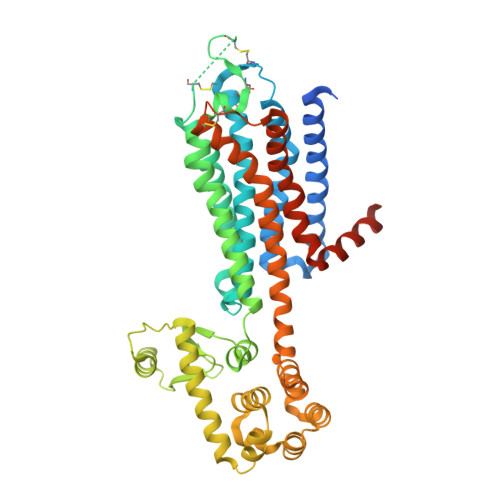Structural Connection between Activation Microswitch and Allosteric Sodium Site in GPCR Signaling.
White, K.L., Eddy, M.T., Gao, Z.G., Han, G.W., Lian, T., Deary, A., Patel, N., Jacobson, K.A., Katritch, V., Stevens, R.C.(2018) Structure 26: 259-269.e5
- PubMed: 29395784
- DOI: https://doi.org/10.1016/j.str.2017.12.013
- Primary Citation of Related Structures:
5WF5, 5WF6 - PubMed Abstract:
Sodium ions are endogenous allosteric modulators of many G-protein-coupled receptors (GPCRs). Mutation of key residues in the sodium binding motif causes a striking effect on G-protein signaling. We report the crystal structures of agonist complexes for two variants in the first sodium coordination shell of the human A 2A adenosine receptor, D52 2.50 N and S91 3.39 A. Both structures present an overall active-like conformation; however, the variants show key changes in the activation motif NPxxY. Changes in the hydrogen bonding network in this microswitch suggest a possible mechanism for modified G-protein signaling and enhanced thermal stability. These structures, signaling data, and thermal stability analysis with a panel of pharmacological ligands provide a basis for understanding the role of the sodium-coordinating residues on stability and G-protein signaling. Utilizing the D 2.50 N variant is a promising method for stabilizing class A GPCRs to accelerate structural efforts and drug discovery.
- Departments of Biological Sciences and Chemistry, Bridge Institute, USC Michelson Center, University of Southern California, 1002 West Childs Way, Los Angeles, CA 90089, USA.
Organizational Affiliation:


















